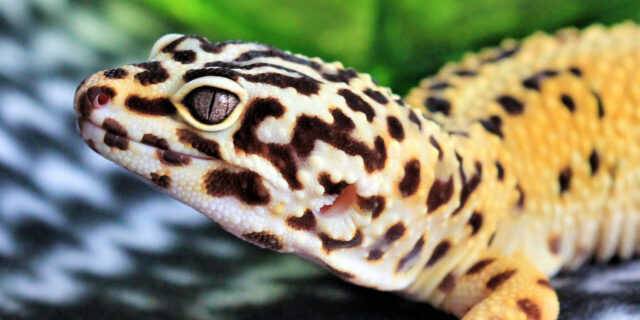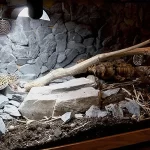Leopard geckos are a popular pet reptile known for their docile nature, ease of care, and wide variety of morphs and colors. An essential part of keeping leopard geckos happy and healthy is providing proper lighting and heating. Using electrical timers allows you to easily automate the day/night cycles and ensure your leopard gecko gets 12-14 hours of light during the day and 10-12 hours of darkness at night.
In this comprehensive blog post, we will cover everything you need to know about using electrical timers for leopard geckos including:
- Benefits of Using Timers
- Types of Timers
- Programming & Setup
- Day/Night Cycle Recommendations
- Tips for Success
- Safety Precautions
- Top Timer Picks for Leopard Geckos
Table of Contents
Benefits of Using Timers
Using an electrical timer for your leopard gecko’s lighting and heating offers many benefits including:
Consistency – Timers allow day/night cycles to be precisely controlled each day. This consistency is important for the health and wellbeing of leopard geckos. Fluctuating light cycles can cause stress.
Convenience – Once set up properly, a timer runs automatically meaning you don’t have to worry about manually turning lights/heating on and off each day.
Energy Efficiency – Timers prevent wasted energy from accidentally leaving lights and heating on 24/7. They automatically switch off at night.
Types of Timers
There are two main types of electrical timers that work well for leopard geckos:
Mechanical Timers – Inexpensive, manually adjusted to set on/off times. Not as precise as digital but get the job done.
Digital Timers – Offer more features like day of the week customization. Often built into power strips designed for terrariums.
When selecting a timer, make sure it can handle the electrical load. Additionally, timers built specifically for reptile/amphibian use will have features to control humidity and separate day/night heat sources.
Programming & Setup
Refer to the specific timer’s manual for exact programming directions. General setup process:
- Plug timer into wall outlet
- Set the clock to current time
- Program the ON time for when lights/heating should turn on in the morning
- Program OFF time for when lights/heating should switch off at night
- Set mode to AUTO so timer follows programmed schedule
- Plug devices into timer
Most quality timers make programming a straightforward process with an easy-to-read digital or analog display. Setting and adjusting on/off times is simple. Just avoid unplugging devices when timer is powered on to prevent losing program memory.
Day/Night Cycle Recommendations
The general lighting guidelines for leopard geckos are:
Day Cycle – 12 to 14 hours of light when your gecko is awake and active. Most owners provide 13 hours of daylight. During this time temperatures in the warm hide should be 88-92°F.
Night Cycle – 10 to 12 hours of darkness when your gecko sleeps. 11 hours is recommended. Temperatures can drop to 70-75°F at night.
With an electrical timer properly setup, you can precisely control this day/night schedule and give your leopard gecko the most naturalistic environment possible.
Tips for Success
Follow these tips when using timers for leopard geckos:
- Use a surge protector. Electrical surges can wipe timer memory.
- Check programming daily. Verify everything is working properly.
- Use battery backup. Maintains timer schedule if power goes out.
- Leave moonlight/night bulb on at night. Allows some visibility without disrupting sleep.
Safety Precautions
Be sure to follow these important safety guidelines:
- Don’t exceed timer’s electrical rating. Can cause overheating.
- Ensure proper wattage/voltage for country. Improper voltage can damage devices.
- Frequently check cords for damage. Don’t use frayed or cracked wires.
- Keep away from moisture and water to avoid electrical hazards.
- Position out of reach of children and pets to avoid accidental reprogramming.
Top Timer Picks for Leopard Geckos
Based on features and actual customer reviews, here are my top timer recommendations:
Zilla 24/7 Digital Timer Power Center – Well-designed terrarium strip with day/night outlets. Battery backup. Handles high wattages.
Century Digital Timer – Very affordable. Easy to program. Manual override option.
BN-LINK Digital Timer – Packs lots of options into a compact timer. Can control two electrical devices separately.
Zoo Med’s Terrarium Timer – Analog dial makes time adjustments a cinch. Separate day/night channels. Sturdy and reliable performance.
Conclusion
Investing in an electrical timer is one of the best ways to provide your leopard gecko with proper lighting and heating. Programmable timers automate day/night cycles for consistency and convenience. Just be sure to follow all safety guidelines and double check the programming periodically. With a quality timer controlling the environment, you can ensure your leopard gecko lives a long, healthy, and happy life. I sincerely hope you find this “Leopard Gecko Using electrical timers” article helpful.





